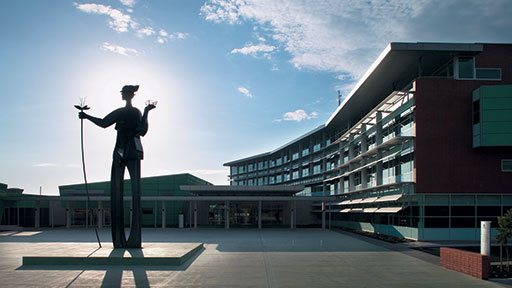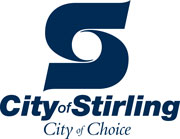Transport for New South Wales
“This is about so much more than standing up a CRM or running reports and dashboards. It’s about unlocking data, making it actionable across a common operating picture, and building a complete view of our efforts – visualised in a way that helps us make the right decision, faster.”

New South Wales
Transport for New South Wales turns its COVID-19 response into a fast, foundational, forward-thinking app-dev strategy.
“One morning at the start of the pandemic, the Premier of New South Wales was standing up before the public in an 11:00 am press conference, issuing late-breaking public health orders that impacted everything about the community’s day-to-day. And we, as a government agency delivering essential services, had to ensure we were compliant by that night,” said Charlie Elias, Director Business Enablement Solutions, Transport for New South Wales.
Transport for New South Wales (TfNSW) leads the development and management of safe, integrated, and efficient public transportation services for the people of New South Wales. Its customers include not just (1) patrons paying for public transit service - a group of about 2 million people per day, but also (2) third-party operators and guides who operate the state’s ferries, buses, and trains, and (3) other government agencies that work with TfNSW to design policies and procedures that help the team meet the mission — on ordinary days and during extraordinary times.
Which is where Elias and the team come in: they leverage the latest technologies to create one of the best user experiences for all three groups of customers, empowering the broader organisation to respond to emergency scenarios quickly, reliably, and consistently. In other words, “we empower people to respond faster, mitigate service disruptions, and maintain service continuity,” said Elias. “And since March 2020, our ability to source, design, build, and test innovative solutions as a part of a common operating picture has only become more important.”
The team built a COVID-19 response system on the cloud that was so modular and so flexible it was repurposed to support a number of other apps across TfNSW, turning resilience into habit.
TfNSW is a real-time business that needs to solve real-time challenges.
Public transportation has always been a business of timeliness; timely schedules, timely service, timely cleaning, and so on which all require clockwork-like coordination and collaboration from leadership, to the back office, to frontline workers. COVID-19 magnified this, increasing the demand for things like cleaning services, compacting routine schedules, and forcing teams to reimagine staffing in order to mitigate exposures and keep systems open.
“Being able to take action promptly is really important in the world of transportation emergency management,” said Thamo Sabesan, Senior Manager, Business Enablement Solutions, TfNSW. “In order to meet those public health deadlines declared at 11:00 am daily, we had to be collectively agile — we had to be agile in terms of people, process, and technology. This was the foundational piece for us.”
Some of those real-time scenarios included:
- Employee health and well-being: Burnout was a concern if employees had to be called back in to cover shifts for colleagues who were out sick. Thus, the team had to understand the impact COVID-19 was having on the front-line workforce at any given moment.
- Accessibility: TfNSW is an essential service that had a responsibility to stay open for the essential workers that rely on the team to get to work at hospitals, grocery stores, police stations, and more. If front-line employees fell ill, the operational team needed to understand that promptly so that they could manage the timetables.
- Compliance: New South Wales’ 12 Local Government Areas (LGAs) would move in and out of lockdowns, and sometimes this meant that a person was not permitted to travel outside their LGA unless they were an essential worker headed out on essential business. TfNSW sought a way to confirm if a rider was authorised to travel outside their LGA, quickly and efficiently in order to help maintain compliance with public health orders.
“We sought to find a way to validate frontline employees before they report to work each day, stand up rapid antigen testing for staff at the start of each shift, and get instructions out to the entire ecosystem — because again, many of our private operator workers are outside Transport in terms of the organisation structure, but they still have to follow the same procedures as our inhouse employees,” Sabesan continued.
I.e.: not the kind of work that is suitable for paper forms or submitting data calls to a back-office if there is was going to be any hope of keeping up with a crisis that redefined the word “speed.” Instead, the team turned to the cloud.
Best practices from Transport for New South Wales
TfNSW builds emergency response apps, fast, with the cloud.
Elias and team launched a digital emergency response management solution on the Salesforce Customer 360 for Government that gives them the tools needed to help authorise clear staff and keep the system open for essential travel — all while keeping data security and public health orders top of mind.
Here’s how it works:
- Employees are invited to register via an online community portal built on Experience Cloud. Here, customers enter basic information and upload proof of employment as an essential employee and/or permission to travel outside their lockdown parameters.
- The information they enter and the documentation they upload is captured in a personalised, profile-like setting in Service Cloud. This gives TfNSW a 360-degree view of each employee and the impacts for TfNSW
- When workers test before their shift, the results are uploaded to this profile. A positive test result triggers a notification, prompting the team to act accordingly (think: isolation, contact tracing, wellness checks, and so on).
- Once the permission is uploaded to the person’s profile, automated workflow rules from the Platform on which Experience Cloud and Service Cloud are built push a notification to the TfNSW team, prompting them to log into the person’s profile, review the documentation, and either accept or decline it.
- Once accepted a certificate is then sent to the employee , which they can then show to police and travel freely during times of lockdown. If an employee needs to update their information — say they moved during the pandemic — they can log back in, make the change, submit any new documentation necessary, and the same workflow continues from there.
- Tableau was added, which the TfNSW team uses to get a point-in-time count of how many workers they have out sick, which routes are most likely to be impacted as a result, and when folks are expected to return to work. The team also uses Tableau to monitor customer-specific metrics such as the number of trips across the Transport network , vehicle detection's and road and rail freight to understand impacts of COVID. No data calls required.
- Shield was also included, helping to bring an additional layer of security to the system, as was Sandbox which offers test environments the team used to design and refine apps before pushing them live.
“Most importantly, this strategy gives us flexibility, end-to-end. When we have real-time information, we can adjust and respond accordingly,” said Sabesan. “We established a proof of concept in two days, released the first version 10 days after that, and then rolled it out to all of Transport another two days later. Now, our teams can respond as one to any COVID-related changes, instantaneously.”
In building those apps, TfNSW also lays the foundation for other critical response programmes.
“And when we’ve needed a new app, we have found that [this platform] brought us 70, 80% there. We didn't have to do much development work; it was all configuration,” said Sabesan.
The team built an enhanced cleaning app to help manage what they call layover cleaning; when a bus pulls into a layover or depot, crews swarm to clean seating areas and hard surfaces . COVID-19 meant layover cleaning happened more frequently, and deep cleans were more important. Even the slightest delay from one team could hold up the next, causing a ripple effect that could greatly impact departure schedules. So, the team built an app that tracks each cleaning service stream. When one team is done, they enter it into the app via their mobile device, which notifies the next team they can begin. If that first team is expecting a delay, they can enter that as well, signaling other teams that they have more time to do a more thorough job. In either scenario, layover teams have real-time visibility and communication with one another, helping crews turn over a vehicle that much faster.
In March of 2022, just as most of the world was finally seeing some sense of normalcy after two years of COVID, New South Wales was drowned by record flooding. The team went back to their cloud app strategy and configured a new set of apps and workflows that give their teams the tools they need to coordinate and manage flood response logistics. Five days later, they had a flood response app that ended up being mission-critical to meeting Transport’s 100-day response plan.
TfNSW’s emergency response system, by the numbers
Key metrics:
- Manages over 35,000 employee profiles
- Issued over 10,000 authorised worker letters
Additional capacity metrics:
- Used to track over 3,500 self-isolation incidents
- Houses over 115,000 rapid antigen test results (with real-time notification of a positive test result)
- Houses over 35,000 vaccine declarations
Team productivity metrics:
- Supports 20 users via mobile (both executive and taskforce level)
- Supports over 20 dashboards
- Supported HR in sending four different types of consultation surveys to over 35,000 employees; i.e.: 140,000 surveys total
- Managing 850,000 (and counting) bus layover cleanings, all in real-time
Additional productivity highlights:
- During the peak period of New South Wales’ COVID lockdowns, the solution handled over 5,000+ form submissions at the same time
- Even though the team rolled out the solution in three pieces, at different times, for different purposes, they are now working together as a single system with an automated workflow connecting them end-to-end.
- Inspired a number of additional apps across TfNSW, for which the average time-to-market was between two to five days
Keep exploring stories like this one.
Questions? We’ll put you on the right path.
Ask about Salesforce products, pricing, implementation, or anything else — our highly trained reps are standing by, ready to help.











